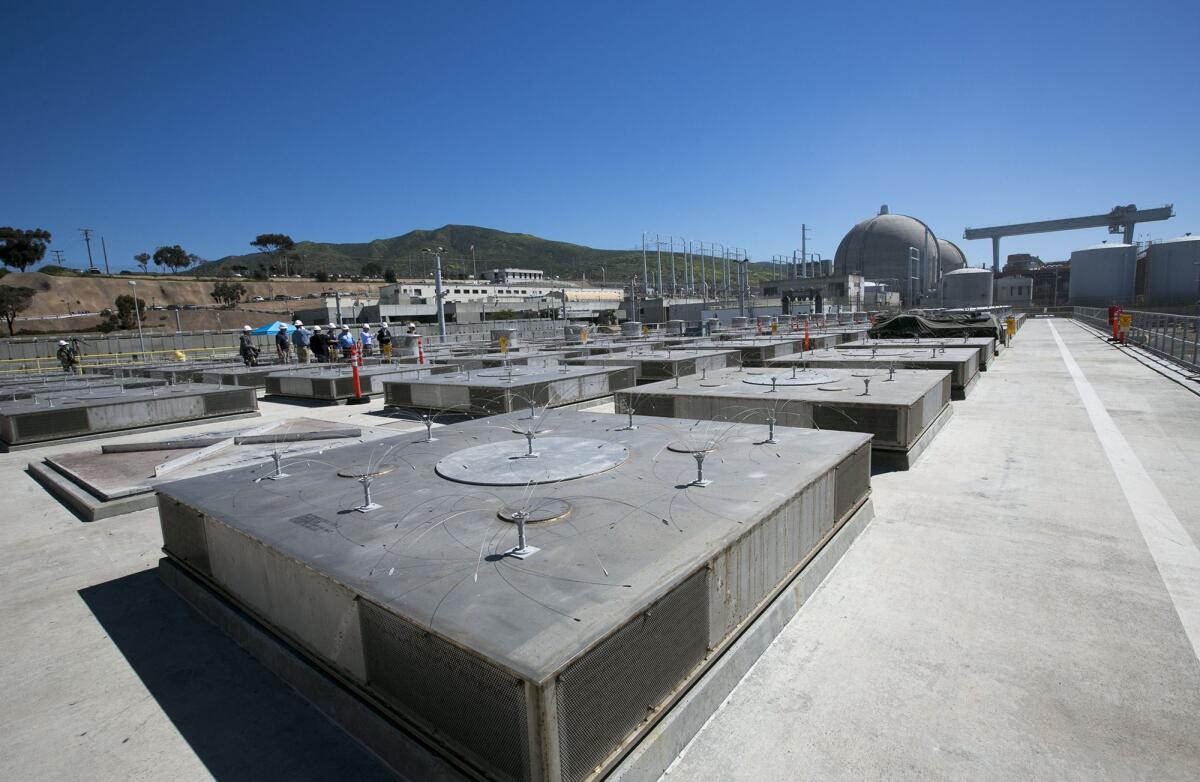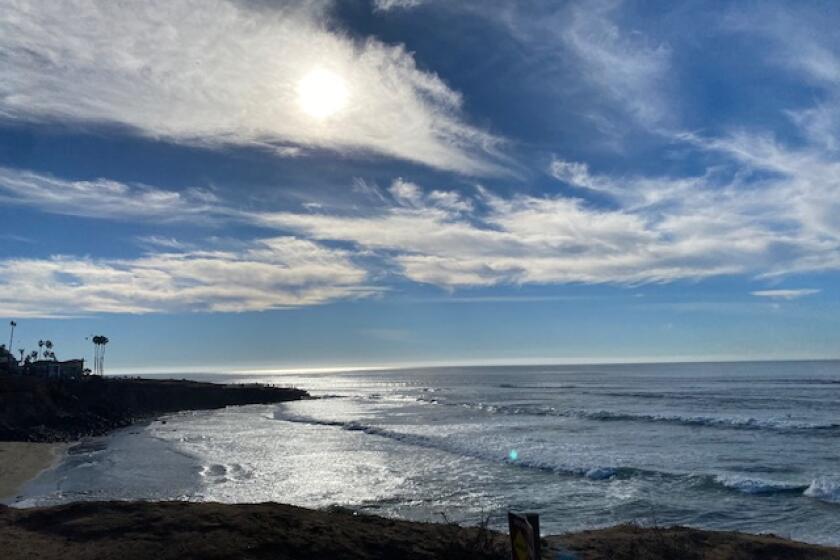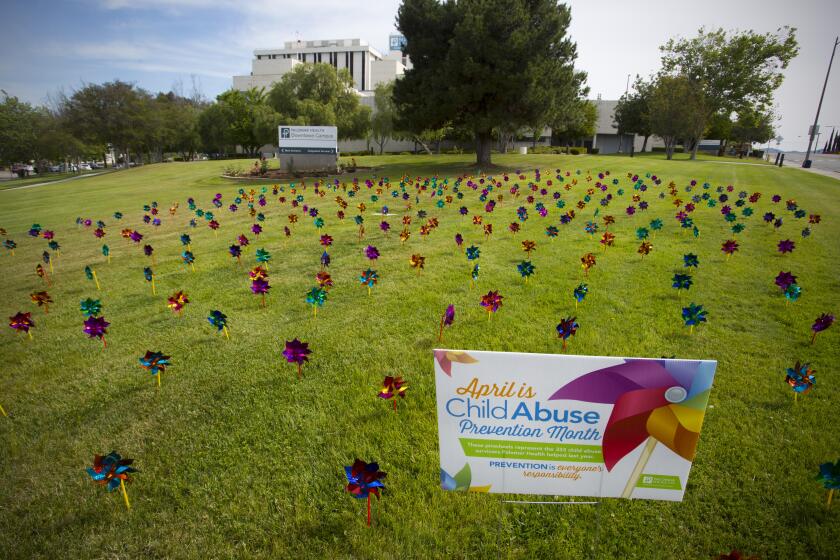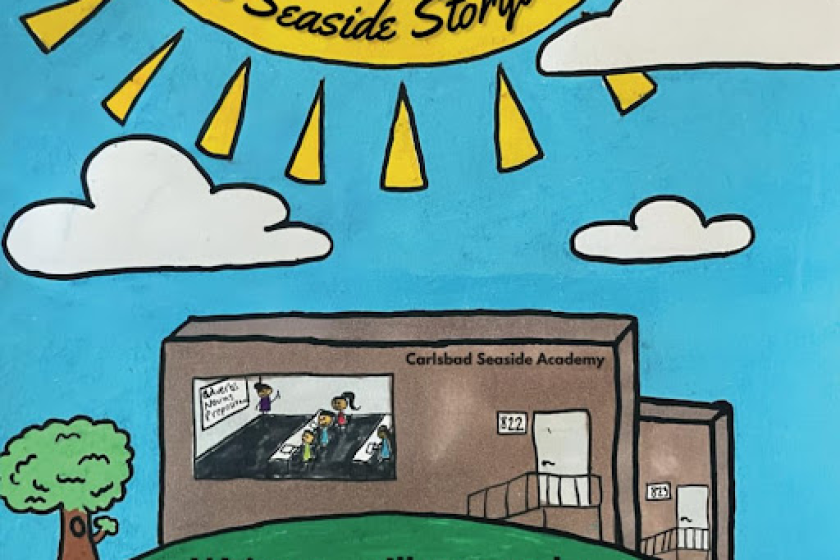Opinion: To move nuclear waste from San Onofre, interim storage is needed

A bipartisan coalition will help find ways to move nuclear fuel from sites like the San Onofre Nuclear Generating Station.
Macedo is a business manager/secretary-treasurer of Laborers International Union of North America Local 89 and lives in Vista. Victor is a professor of innovation, public policy and climate science at UC San Diego and the Scripps Institution of Oceanography and lives in Solana Beach.
The recent launch of a new coalition — Action for Spent Fuel Solutions Now — deserves a round of applause. The bipartisan coalition, if it gets traction, will help find practical ways to move nuclear fuel from sites like the San Onofre Nuclear Generating Station. The initial membership is drawn from across society, including labor, business and community organizations, and Native American and environmental leaders and involves Southern California Edison, which operated the plant. Now that SONGS is closed, nearly everyone wants the fuel to leave — an outcome that wouldn’t just improve the environment and create jobs but would also free land to support the Navy’s critical training mission at Marine Corps Base Camp Pendleton, where this spent fuel now resides.
San Diego County must play a central role. It is encouraging to see that San Diego County Supervisor Jim Desmond is serving as co-chair of the coalition along with Orange County Supervisor Lisa Bartlett. The unanimous vote Aug. 17 by the San Diego County Board of Supervisors in support of the coalition is a powerful signal that communities want action.
We’ve been on the front lines of this issue for the last seven years as volunteer members of the San Onofre Community Engagement Panel. No issue commands more passionate debate than what to do with the plant’s spent fuel. And at no time in history has the path to victory in moving the fuel been easier to see.
The problem with San Onofre’s fuel is that the U.S. Department of Energy, which was scheduled to begin picking up spent fuel from nuclear plants nationwide in 1998 and delivering it for permanent storage in Nevada’s Yucca Mountain, has failed to deliver. After the federal government spent $15 billion on the project, political support for it collapsed.
A new strategy, including what’s called interim storage, is needed. Two private interim sites are already being lined up — places where fuel from San Onofre (and many other sites) can go until it moves to a final home. Making the interim option work requires a long-term plan as well for a permanent repository. None of this was envisioned back in the 1980s when the key federal waste law was first crafted. Making it a reality requires a change in law, and that means getting votes in Congress.
The good news is that elements of a coalition in Congress are now taking shape. Rep. Mike Levin, D-San Juan Capistrano, who convened a task force focused on SONGS two years ago, is building political support at the federal level for changes in federal law, including with a bipartisan Spent Nuclear Fuel Solutions Caucus formed with Rep. Rodney Davis, R-Illinois, where, like at San Onofre, communities face futures with retired nuclear reactors and the spent fuel stuck on site. Congressional support is building across San Diego and Orange Counties, including Reps. Michelle Steel, R-Seal Beach, Darrell Issa, R-Bonsall, Scott Peters, D-San Diego, and Sara Jacobs, D-San Diego. Rep. Doris Matsui, D-Sacramento, has reintroduced legislation in the House that would enable development of a federal interim storage site. U.S. Sen. Dianne Feinstein, D-San Francisco, is a staunch supporter of similar ideas with draft legislation. U.S. Energy Secretary Jennifer Granholm has made supportive comments, and Energy Department budget planning sees a future of interim storage as well.
All these encouraging federal signals need to become more frequent, stronger and better supported locally. That’s why the new local coalition is so important — and why San Diego’s voice is so essential. There are many voices yelling the wrong messages, such as activist groups running PR stunts aimed at pushing San Onofre to use technologies and handling methods for spent fuel that aren’t best practice — outcomes that, if successful, would make it even harder to move the fuel from here.
A fresh analysis by a team of leading experts comes to the same conclusion: If we want to move the spent fuel then interim storage is essential. And without strong political support and smart strategy, that analysis also found that “Private storage facilities face challenges of public and host-state acceptance.”
Doing what’s right for this community is not about being pro-nuclear power or anti-nuclear. It’s about practical realism. SONGS was retired years ago and is being dismantled. This is about the federal government delivering on its commitment to provide an offsite facility for spent nuclear fuel. Now’s your chance to make your voice heard and to make sure San Diego’s political heft is pushing for a solution.
Get Weekend Opinion on Sundays and Reader Opinion on Mondays
Editorials, commentary and more delivered Sunday morning, and Reader Reaction on Mondays.
You may occasionally receive promotional content from the San Diego Union-Tribune.




